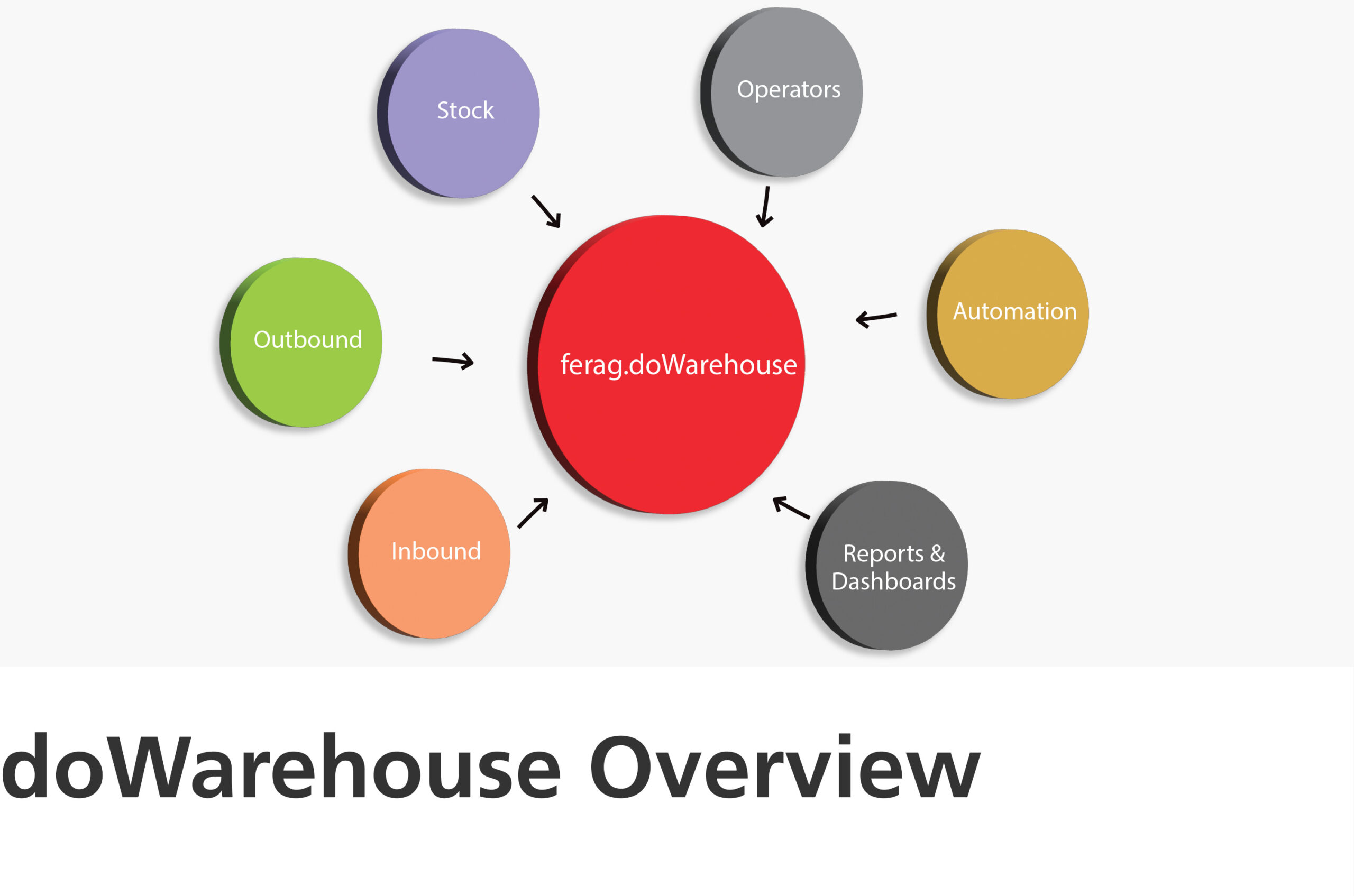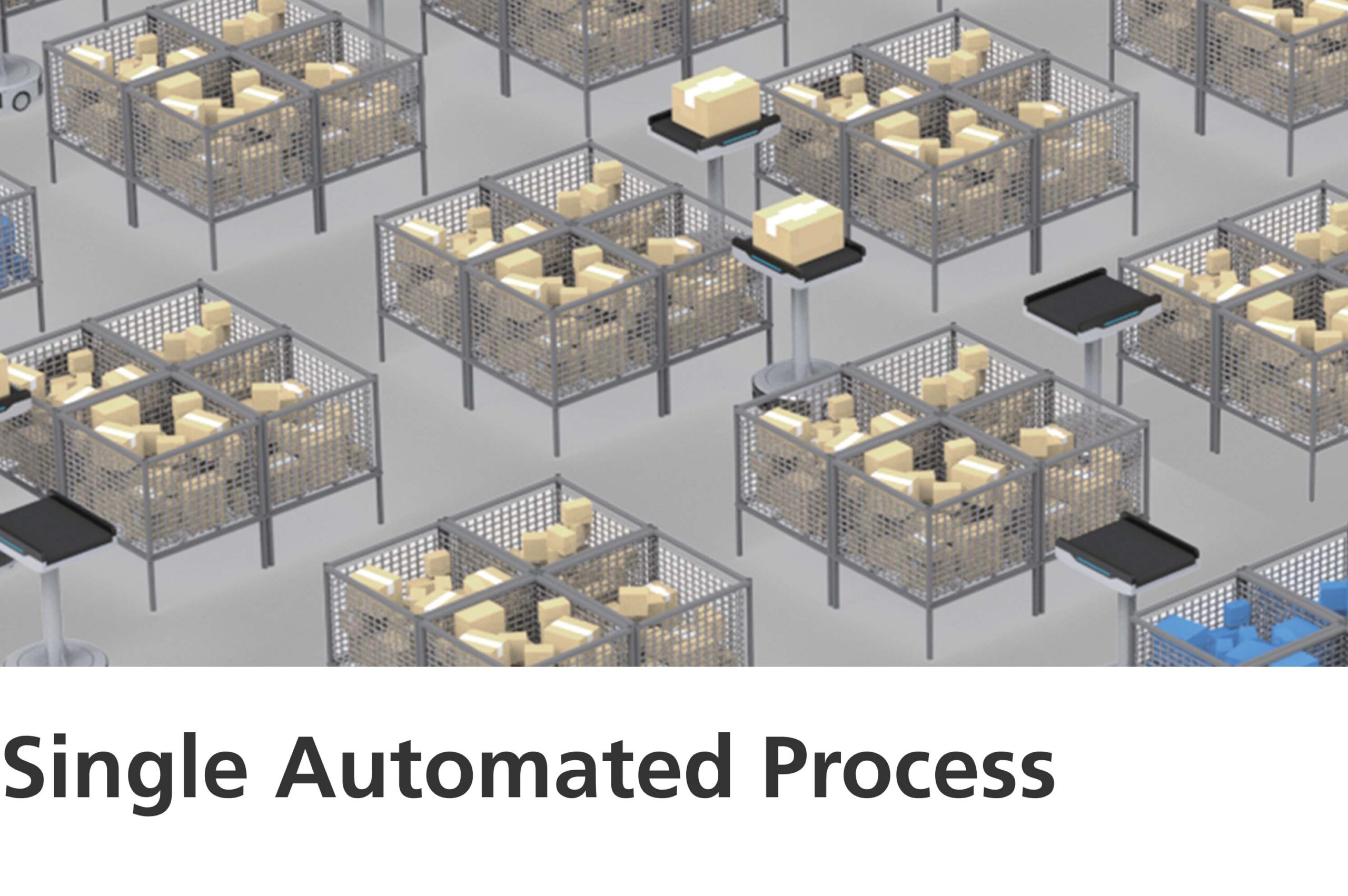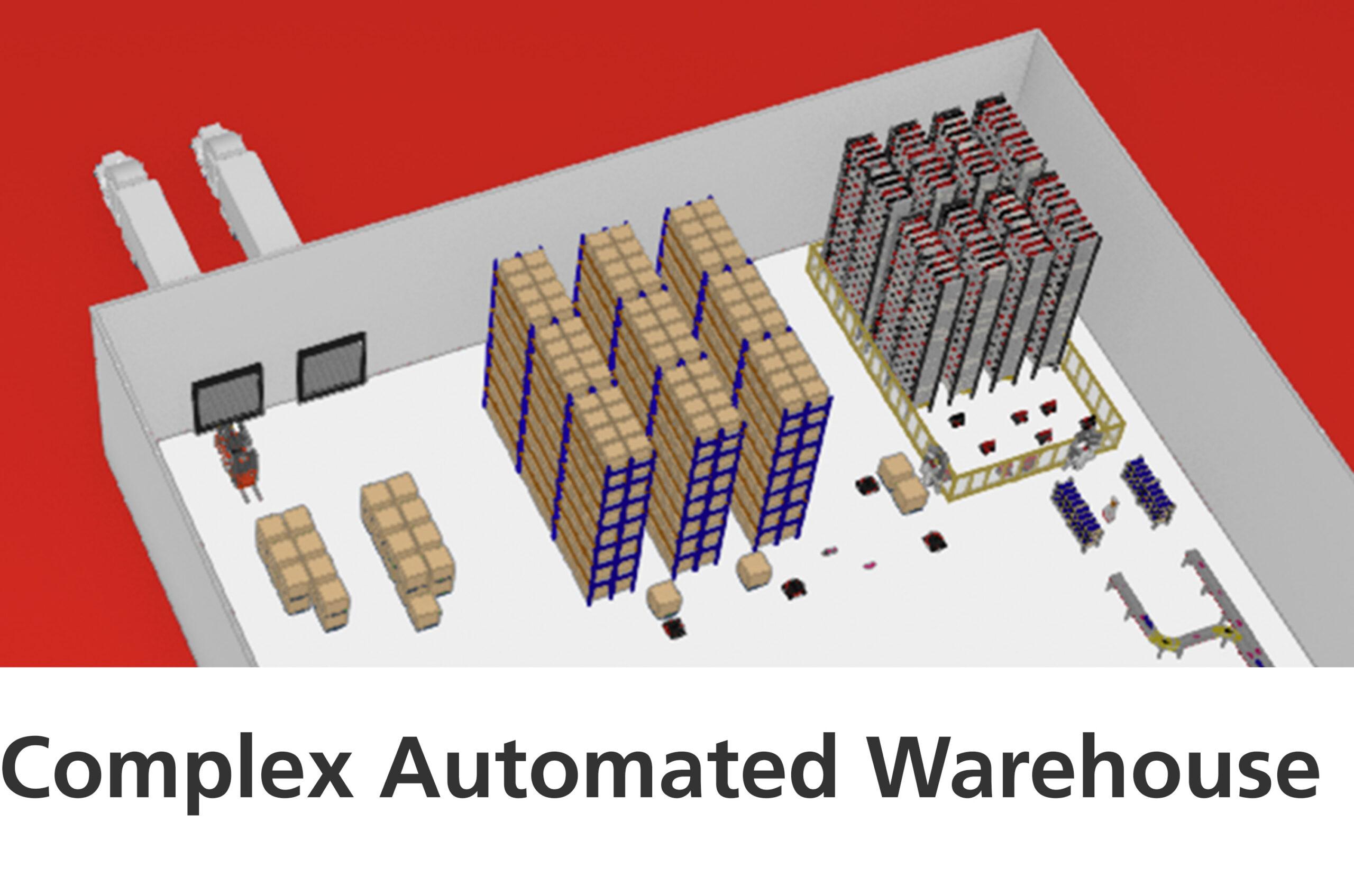How retailers can gain a competitive edge by utilising smart fulfilment
Article | 2nd Apr, 2025
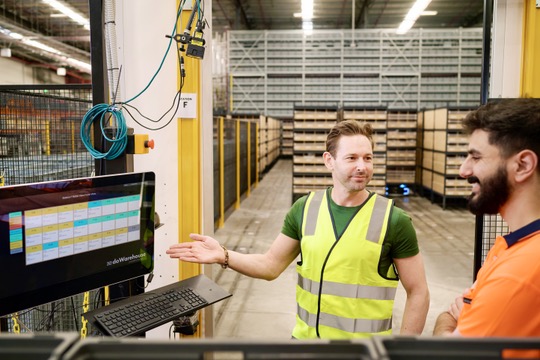
Karl Friesenbichler showing doWarehouse
As consumer expectations continue to evolve, fulfilment has emerged as a critical competitive differentiator in the retail industry. Today, meeting consumer demand for speed, reliability, and transparency is no longer just a logistical task, it is a strategic imperative that drives customer loyalty, acquisition, and profitability.
Retailers that adapt to these demands gain a competitive edge. In a recent Inside Retail article, we explored how brands like Shien and Temu have leveraged innovation to achieve this. By embracing smarter fulfilment strategies, these retailers differentiate themselves, build stronger customer relationships, and establish a sustainable competitive advantage.
In the same article, we also discussed how smarter warehousing is transforming Australia’s fashion industry. Technologies such as real-time inventory management, automated picking systems, and flexible fulfilment models are playing a key role in enhancing operational efficiency. These innovations are essential to meeting growing customer expectations, forming the backbone of modern fulfilment strategies, and enabling faster, more accurate, and cost-efficient order processing. [Read more here.]
Fulfilment as a Strategic Differentiator
Today’s consumers are more demanding than ever, expecting quick, reliable, and convenient delivery options. As the retail environment grows more competitive, retailers need to view fulfilment as a strategic advantage. Superior fulfilment creates customer trust, builds loyalty, and enhances lifetime value, whereas subpar fulfilment can quickly damage a brand’s reputation and lead to lost customers.
By embracing best-in-class fulfilment practices, retailers can ensure that customer experiences are seamless, reliable, and efficient. These practices not only help retailers stay competitive but also ensure they are positioned for long-term success in an increasingly fast-paced, digitally-driven world.
Automation and Intelligent Efficiency: The Key to Meeting Consumer Demands
Automation and robotics are among the most transformative forces in fulfilment today. Technologies such as goods-to-person systems, sortation robots, and autonomous mobile robots (AMRs) are enhancing warehouse operations, improving throughput, and increasing accuracy. By integrating automation, retailers can scale their operations to meet increasing consumer demand, particularly during peak periods such as Black Friday, Boxing Day or the holiday season.
Strategic automation, combined with data analytics, plays a critical role in meeting high consumer expectations profitably. By automating processes, retailers can reduce human error, optimise inventory management, and speed up order fulfilment, all of which lead to improved EBIT and better customer satisfaction.
In our previous article on smarter warehousing, we highlighted how fashion retailers can leverage automation to optimise their fulfilment systems and prepare for demand spikes. For example, Ferag’s Skyfall system can automate the sequencing and sorting of high-demand items, allowing retailers to better manage peak order volumes and deliver orders faster, more accurately, and with greater efficiency.
Adaptability and Resilience: Core to the “New Standard”
In addition to speed, fulfilment today demands agility. Retailers need to be able to adapt quickly to shifts in demand, disruptions in the supply chain, or changes in consumer behaviour. This adaptability is critical for maintaining high levels of customer satisfaction, especially when unexpected events occur.
Smart warehousing plays a vital role in ensuring flexibility. With real-time stock visibility, retailers can optimise order picking, balance supply and demand, and shift fulfilment methods as needed. Whether it’s re-routing orders, accessing alternative supply channels, or adjusting delivery methods, the ability to respond quickly to market changes ensures retailers can continue to meet consumer expectations.
As the market becomes increasingly unpredictable, the ability to pivot quickly is key to staying competitive. Retailers with flexible, scalable fulfilment solutions will be better equipped to handle disruptions and continue delivering exceptional service, regardless of external challenges.
The Impact of Fulfilment Innovation on EBIT
The benefits of fulfilment innovation go beyond customer experience—they also have a direct impact on the bottom line. By adopting automation and optimising fulfilment processes, retailers can lower operating costs, reduce inefficiencies, boost profitability and positively impact EBIT.
Improved pick/pack accuracy reduces costly errors and customer service interactions, while enhanced order orchestration and inventory management can streamline operations. This ultimately leads to lower labour dependency, improved throughput, and higher margins. Retailers investing in automation are not just improving their service offering—they are also positioning themselves for long-term profitability.
Ferag’s solutions, such as the Skyfall pouch system, demonstrate how automation can streamline fulfilment operations. The system enables retailers to pre-sort high-demand items, optimise order sequencing, and enhance packing efficiency. By pre-sorting stock for the sales floor, retailers can quickly move stock to the floor, bypassing the back-of-store processes. This approach reduces stock-outs, increases sales, and boosts customer satisfaction. Additionally, by reducing bottlenecks and prioritising VIP orders, retailers can better manage peak order volumes and deliver superior service during critical times. All of which improves EBIT.
Retailers Who Embrace Innovation in Fulfilment Gain a Competitive Edge
Fulfilment is no longer a mere logistical function—it is a strategic differentiator. Retailers who embrace automation, efficiency, and adaptability in their fulfilment processes are not just meeting consumer demands—they are outpacing them. These retailers are setting new standards in service, customer experience, and operational excellence.
Ultimately, the new standard in retail fulfilment is about exceeding consumer expectations and using fulfilment as a competitive weapon to drive customer loyalty, reduce operational costs, improving profitability and positively impacting EBIT. By leveraging innovative fulfilment technologies, retailers can gain a competitive edge that leads to stronger growth, improved EBIT, and long-term success in a rapidly changing market.
For more insights on smarter warehousing and how it can boost your fulfilment strategies, explore our previous article on Inside Retail.
Can Smarter Warehousing Boost Australia’s Fashion Industry?
Article | 24th Feb, 2025

Can Smarter Warehousing Boost Australia’s Fashion Industry?
2024 presented some challenges for the Australian fashion industry. A series of shifts and challenges have placed the sector under strain. Iconic brands like Dion Lee and Mosaic Brands closed their doors, and IMG’s departure from Australian Fashion Week disrupted the sector. Rising operational costs, increased global competition, and shifting consumer behaviours are among the contributing factors.
Micro-Trends: A New Frontier in Fashion
A key factor influencing Australian fashion is the rise of “micro-trends”—short-lived fashion movements amplified by platforms like TikTok and Instagram. This fast-moving cycle pressures brands to accelerate production and delivery. Ultra-fast fashion brands like Shein and Temu have leveraged advanced analytics and agile supply chains to dominate the market. Local Australian brands, burdened by higher production costs and slower logistics, find it increasingly difficult to compete at the same speed.
Fast Fashion’s Dominance and Its Impact
Fast fashion has transformed retail dynamics. Shein utilises advanced data analytics to predict trends and manufacture new designs with speed, while Temu’s aggressive pricing strategies have captured cost-conscious consumers. This shift also presents an opportunity for Australian brands to differentiate themselves through quality and sustainability—areas where fast fashion often faces criticism.
The Role of Supply Chain Efficiency
Supply chain efficiency has become crucial in today’s market. Fast and reliable delivery is no longer optional, it is essential. Smart warehousing and automation technologies offer a path forward, enabling local brands to streamline operations, reduce delays, and improve fulfilment speed. These innovations allow Australian fashion brands to remain competitive, even in a global market increasingly dominated by fast fashion giants.
Ferag’s Role in Fashion Retail Innovation
To remain competitive, Australian fashion brands need scalable fulfilment strategies that support both in-store and e-commerce operations. Ferag offers smart solutions for both B2B and B2C that combine both speed, accuracy, and lower labour costs
1. Getting Product to Shelf in Stores Quicker
How it works:
- Ferag’s Skyfall sequencing and doWarehouse’s smart waving and cubing modules pre-sort items in a sequence that allows product to be directly unloaded to shelf or rack.
- Product is sequenced into a carton or tote, in order line sequence, allowing layering of product via automation. This allows for direct unpacking from the carton onto the shelf in order
- Hangered garments can also be sequenced in order line sequence allowing garment trolleys to be built in a smart SKU sequence, for easy transfer to racks on the store floor
Key benefits:
- Reduces lost sales through faster restocking
- Improves space utilisation in-store
- Streamlines back-of-house operations, reducing labour costs
- Improves supply chain Service Level Agreement (SLA) metrics to stores
2. E-Commerce Fulfilment Excellence
- Managing Peak Demand with Automation
- Predictive loading: Ferag’s doWarehouse can utilise demand forecasts to pre-load products that are expected to have high demand e.g. new product launch or sales event. Skyfall pouch sorter: Stacks high-demand items for fast retrieval during peak periods, allowing orders to be automatically picked and then to packing in one-step handling
- Volume: Ferag’s smart solutions are designed to handle high volumes at speed
Key benefits:
- Increases fulfilment speed while reducing temporary labour costs
- Reduces the need for large automation costs to cover highest peak period, by flattening the peak
- Fast and Accurate Order Fulfilment
- Skyfall Fast-Track Lane: Dedicated lane for priority orders, ensuring rapid processing.
- High inventory accuracy: doWarehouse directs operators to the exact product location, displaying a visual product verification for accuracy.
- Automated Picking: doWarehouse supports a range of automated picking solution to ensure fast and labour efficient picking
Key benefits:
- Faster order processing leads to improved customer satisfaction
- Higher SLA performance reduces delays and enhances brand trust
- More repeat orders contribute to increased revenue
3. Freight Cost Reduction and Sustainability
- Reducing the number of cartons/satchels for the one consignment, as Skyfall and doWarehouse can logically group order lines together from the same or different storage areas, without the warehouse operator having to travel
- Inventory accuracy minimises returns: Fewer incorrect shipments lead to fewer unnecessary returns and increased customer loyalty.
Key benefits:
- Reduces shipping costs with fewer packages and reduced returns
- Enhances processing speed for high-demand periods
- Supports sustainability by reducing freight and consumables
Ferag’s range of smart solutions including Skyfall and doWarehouse unified control system (UCs) are designed to help fashion brands in Australia optimise their fulfilment operations, improve efficiency, cut costs, and deliver a better customer experience.
The Economic Impact of Fulfilment Innovation
Investing in supply chain efficiency does not just meet consumer expectations—it also drives profitability. Ferag’s doWarehouse UCS and Skyfall solutions reduce labour dependency, boost equipment efficiency, and lower return rates through more accurate fulfilment. This allows brands to optimise their operations, reduce costs, and improve EBIT, creating a more financially resilient business model.
Conclusion: Opportunity comes from challenges
Could the challenges of the Australian Fashion Industry in 2024 offer an opportunity for reinvention? By embracing innovation, sustainability, and smarter supply chains, Australian fashion brands can not only survive but thrive. Meeting the demands of the modern market will require significant investment in technology, but the potential rewards—an efficient, sustainable, and competitive industry—make it a step worth taking.
Read the Inside Retail article here
The positive impact on EBIT from safety
Article | 9th Dec, 2024
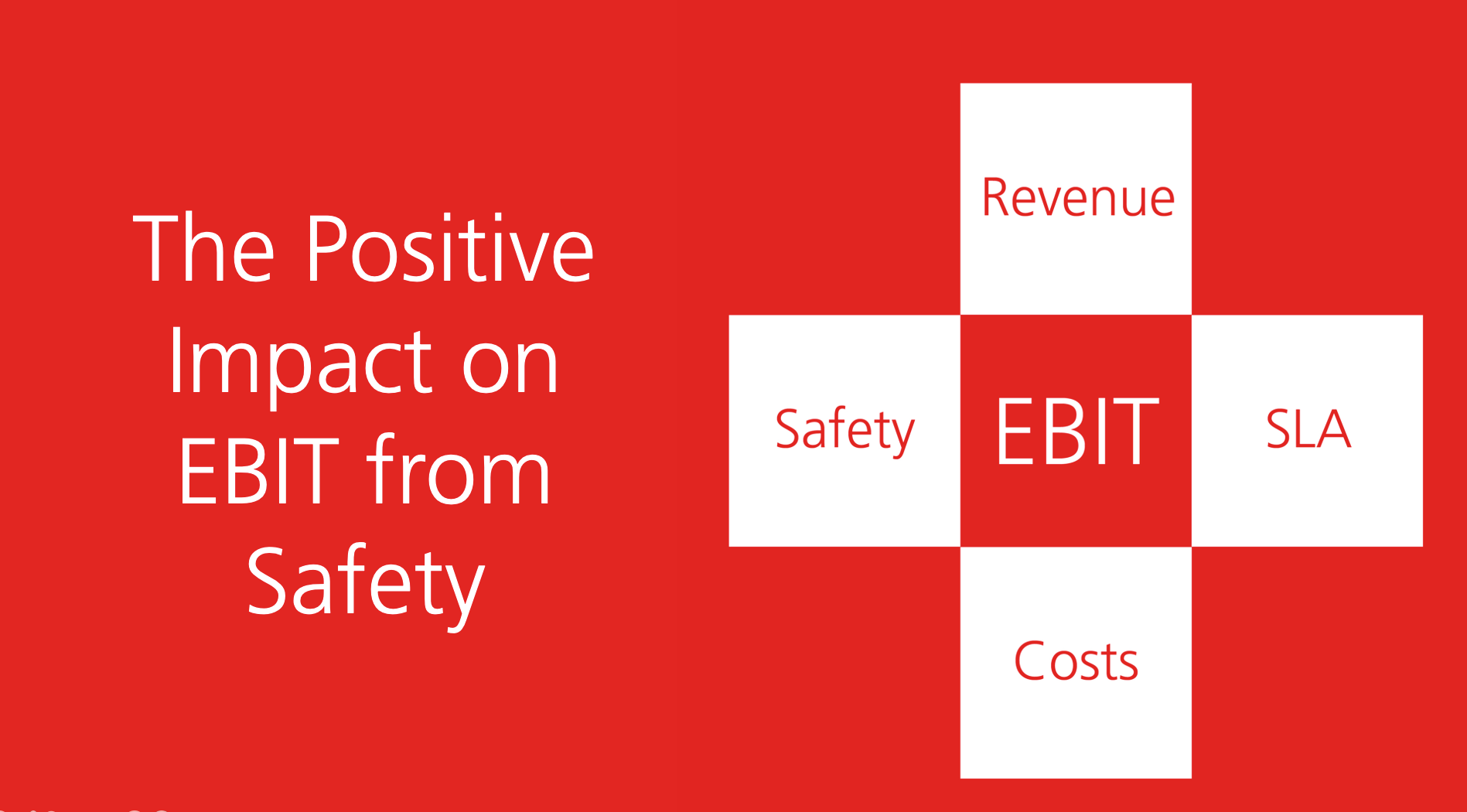
Ferag views safety as a strategic priority that can transform intralogistics operations. By embedding safety into every phase of projects, it helps businesses optimise efficiency, reduce costs, and enhance performance.
This article explores how organisations can take a similar approach, demonstrating how safety drives profitability and enhances operational success.
The positive impact on EBIT from safety
Safety initiatives directly influence the key drivers of EBIT: cost reduction, improved Service Level Agreements (SLAs), and revenue growth. Here’s how:
- Cost savings: Investments in safety reduce incident-related costs such as workplace injuries, downtime, and insurance premiums. These savings directly enhance operational profitability.
- Productivity improvements: A robust safety culture enables employees to work confidently and efficiently, minimising disruptions and delays. This leads to better SLA performance and operational output.
- Compliance and legal protection: Maintaining high safety standards while supporting ESG (Environmental, Social, and Governance) initiatives mitigates legal risks and ensures regulatory compliance. This proactive approach helps organisations avoid penalties and costly lawsuits, protecting both their finances and reputation.
- Workforce retention and attraction: A safe workplace fosters employee loyalty and attracts skilled talent. Reduced turnover ensures knowledge retention, while new talent contributes to enhanced productivity.
- Customer trust and reputation: A strong safety record builds trust with clients, enhancing the organisation’s reputation as a reliable partner. This often results in increased customer retention and market share.
Embedding safety into operations
To realise the benefits of safety, organisations should adopt a systematic approach to embedding safety into their operations. Key strategies include:
- Planning with safety in mind: From the initial stages of project planning, safety considerations should guide the design of processes, systems, and equipment.
- Tailored solutions: Safety systems should be customised to address the unique challenges and risks of each operation.
- Continuous monitoring: Safety is not a one-off initiative. Regular assessments and updates are essential to stay ahead of emerging risks.
- Training and awareness: Comprehensive safety training ensures that employees and stakeholders are aware of their roles in maintaining a safe work environment.
- Leadership commitment: Having dedicated safety leaders ensures that safety remains a priority at all levels of the organisation.
Safety as a strategic investment
While implementing safety measures requires upfront investment, the returns are substantial. Costs associated with documenting procedures, purchasing equipment, and training employees are outweighed by the long-term benefits of reduced incidents, enhanced efficiency, and improved profitability. In addition, organisations with strong safety frameworks often gain a competitive edge in securing new business opportunities, particularly in industries where safety records influence procurement decisions.
Adopting a data-driven approach to risk management, standardisation, and modernising safety systems and training programs can amplify these benefits. This strategy not only reduces costs but also boosts overall productivity, enhances safety awareness, and strengthens customer confidence, positioning organisations for sustained success.
At Ferag, safety is woven into the fabric of every solution delivered. By embedding safety into every aspect of project implementation, Ferag has helped clients achieve smoother operations, mitigate risks, and safeguard their people, assets, and reputation. This approach not only enhances operational performance but also supports long-term business growth.
Organisations that prioritise safety, as Ferag does, can achieve a competitive edge in the market. Safety is more than a responsibility—it’s a strategic advantage that drives efficiency, reduces costs, and improves EBIT. With a strong focus on safety, businesses can achieve operational excellence while fostering trust and loyalty among employees, partners, and clients.
Read the MHD article here
Meeting peak demands with automation
Article | 5th Aug, 2024
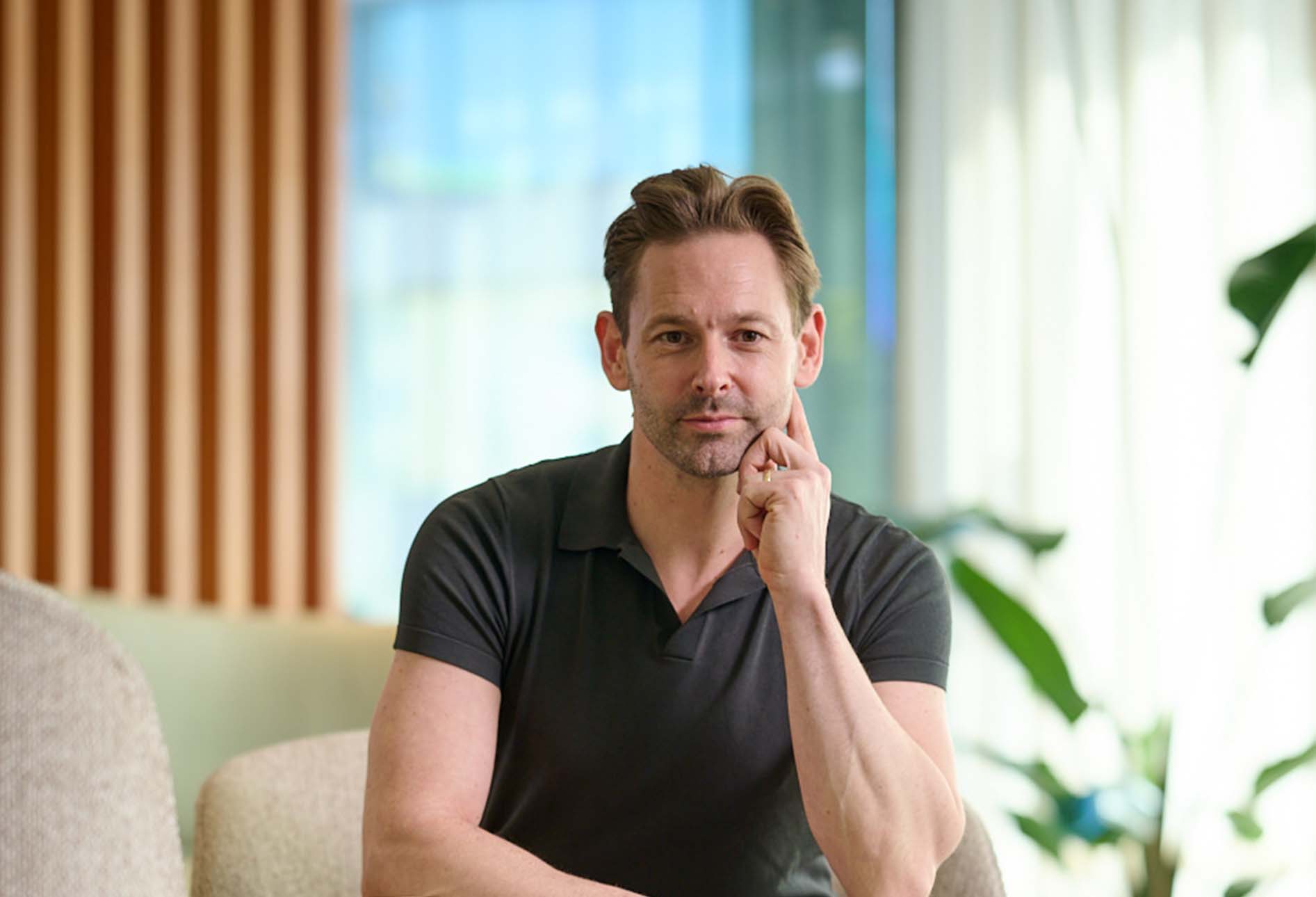
Ferag Managing Director and Head of Region APAC, Karl Friesenbichler, talks about the company’s warehousing solutions.
Ferag is a global company with its APAC head office based in Sydney and its global headquarters in Hinwil/Zurich.
It is a Swiss family-owned group and has been the global market leader in conveying and processing systems in the graphical industry for over 65 years.
Ferag has now shifted focus to Intralogistics and offers end-to-end solutions, from initial consultancy to system integration, project delivery, service and support.
Ferag’s product offerings encompass cutting-edge UCS (WMS/ WCS / WES) software, sortation systems, AMRs and AGVs, as well as service and support to ensure optimal performance.
With a strong emphasis on innovation and technology, Ferag maintains a global presence, represented by 19 sales and service companies, delivering tailored solutions designed to address warehousing demands.
During peak demand periods like Black Friday or promotional events, warehouses often struggle to meet capacity needs, despite the urgent requirement for fast order fulfillment in e-commerce.
As the Managing Director of Ferag APAC, Karl Friesenbichler, explains, this is a key issue – balancing cost efficiency with the need for speedy delivery to satisfy emotionally invested customers.
“The problem with e-commerce is the emotional journey of the buyer,” says Karl. “Once you purchase something, your money is gone, and you feel ownership of the product, even though it’s not yet in your hands. This is the big issue with e-commerce: the emotional aspect.
“As your supplier, I’m in a difficult position because I haven’t yet fulfilled my promise. I must deliver it as soon as possible because of this emotional attachment.”
When considering methods to manage these operations, some of the options are zone routing and automated storage and retrieval systems (AS/RS).
But as Karl explains, the uses for AS/RS systems are situational and a hybrid approach typically offers the best results.
“For large, bulky items, AS/RS can be inefficient, and for fast-moving stock, AS/RS may cause double handling, making it less suitable,” adds Karl.
“AS/RS excels in storage density, fitting many products into a small space, but during peak demand, it may lack the capacity to retrieve stock quickly enough.
“A well-designed warehouse typically combines different systems: fast-moving products are efficiently handled with a conveyor-based system or zone routing, while slower-moving, or less frequent items, can be stored in AS/RS.”
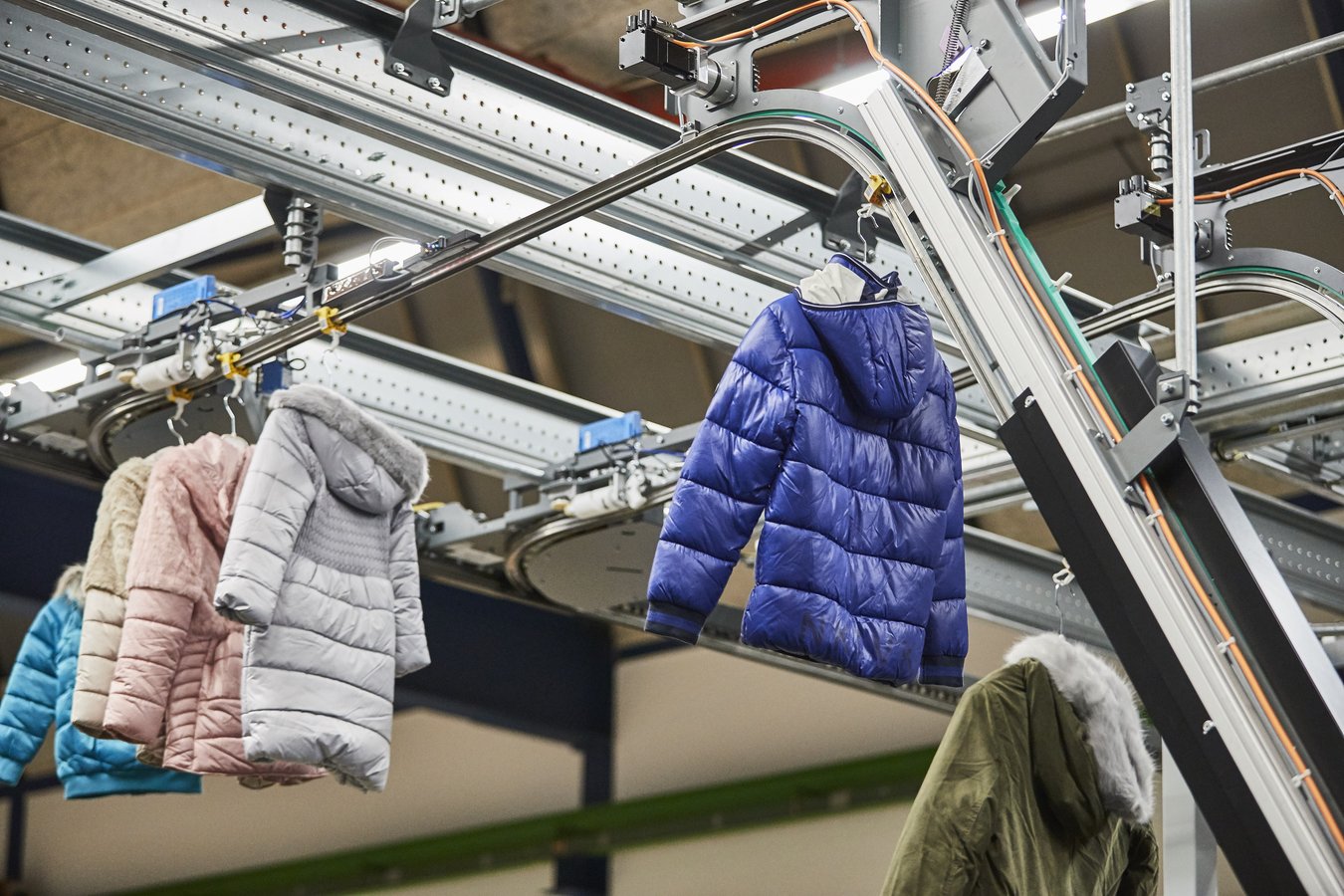
Success stories
Karl says that The Iconic, an online retailer, exemplifies the effective mix of manual and automated picking systems.
“The Iconic is a prime example of mixing manual picking areas with automated picking systems, using multiple different automated systems to meet various product requirements,” he continues.
“Cosmetics, perfumes, or high-value items are stored differently than super fast-moving fashion items, and fragile or dangerous goods require their own handling methods”.
“As an online retailer, The Iconic effectively uses an eclectic mix of systems tailored to their diverse product mix.”
Each system’s validity in the warehouse is crucial, but interconnection is key.
Traditionally, conveyors were used but had issues with space and fire exits. Recently, pouch sorters utilising ceiling space have become popular.
Automated packing integrates seamlessly, eliminating human interaction and easing peak day pressures.
ferag.doWarehouse advanced software further enhances efficiency by predictively moving stock into the pouch system before peak days, reducing peak demand.
These systems can ultimately handle up to 100,000 pouches, processing 30,000 pieces per hour, outperforming conveyors.
“Instead of occupying a large floor area where orders wait for pieces to be gathered from different areas, they utilise pouch sorting,” says Karl.
“This method eliminates restrictions on the number of orders that can be processed simultaneously, allowing operations to scale with demand.”
Demand forecasting
Karl highlights the challenge of forecasting and predicting warehousing demand, noting its propensity for inaccuracies.
Predicting merchandise behaviour proves challenging, but at Ferag, we can analyse product trends and historical data effectively.
“Using doWarehouse’s AI and machine learning, we identify patterns and enhance our forecasts,” says Karl.
“Our data science team supplements this with additional data such as weather patterns, holidays, migration trends, and customer demographics. These factors help predict if a product will sell faster each week, enriching forecasts provided by our customers, our merchandise or sales teams.
“For example, consider soft drinks: sales increase significantly during sunny weekends compared to rainy weather. For fashion items, online sales might spike on rainy winter days when people prefer shopping indoors. Our forecasting models account for these variables to optimise which products are stocked in our systems.”
Ferag have effectively implemented these predictive measures for their clients, namely, Mayoral.
It not only places orders but also collaborates closely with Ferag to continually enhance its systems. It also assesses whether actions were correct or if products need repositioning within an ASRS.
This feedback loop is crucial as it allows ferag.doWarehouse’s machine-learning algorithms to improve over time by learning from successes and failures.
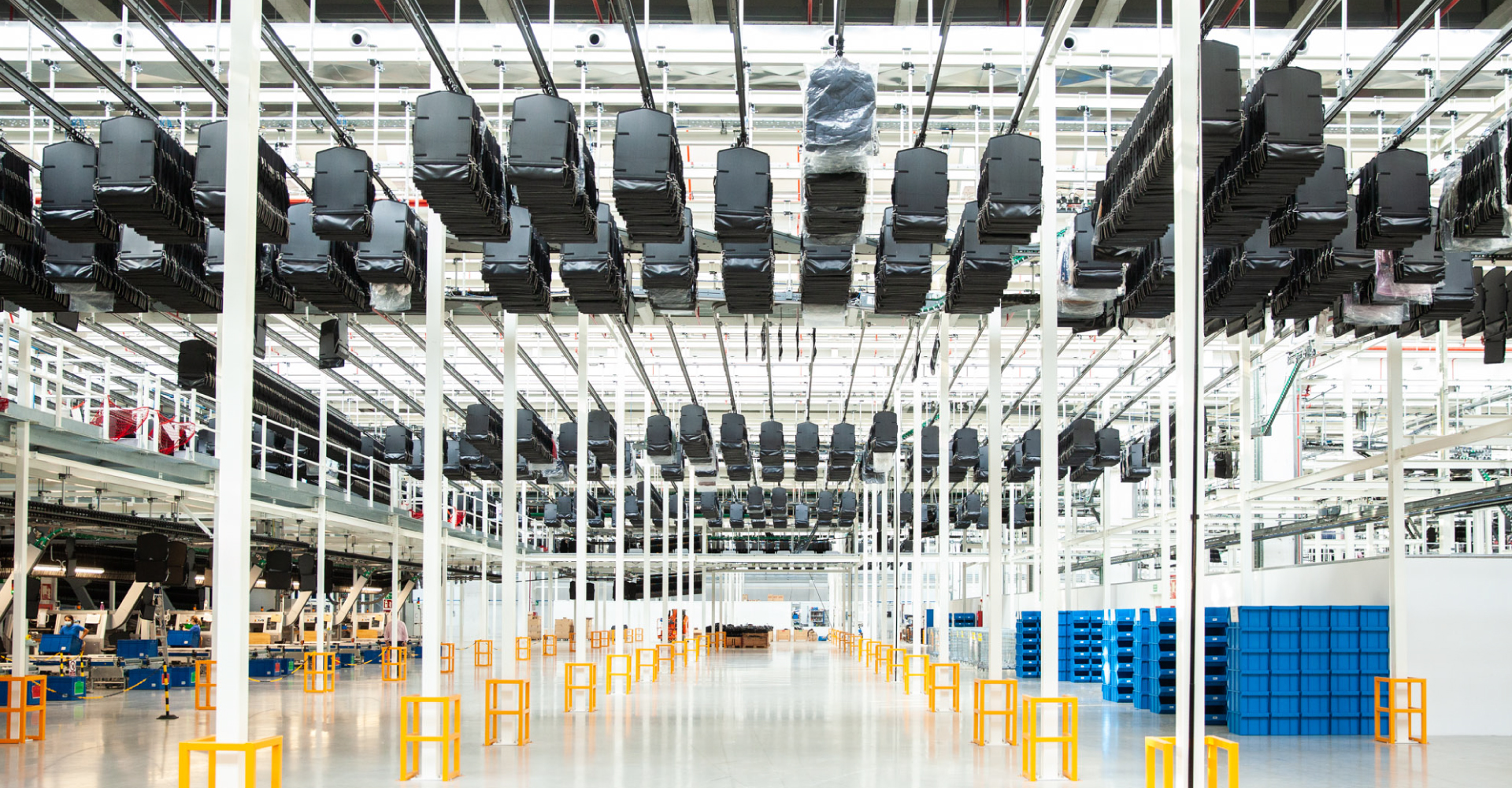
Ferag SkyFall
One of Ferag’s flagship systems is called SkyFall. This is an innovative overhead conveyor system that utilises gravity and the third dimension.
It features a straightforward rail profile with roller bodies, enabling a range of items weighing up to 20 kilograms to be transported from point A to point B.
As Karl explains, the beauty of implementing a system like this is that it causes little disruption to processes.
“When considering how to integrate a significant level of automation into an existing warehouse with minimal disruption, our approach is designed to utilise space efficiently,” he says.
“By constructing automation systems beneath the ceiling, we require minimal floor space. This allows us to integrate new solutions seamlessly with existing infrastructure, minimising disruption.”
Karl says that the Skyfall system has a proven legacy of precision and robust engineering.
“The chain utilised in the SkyFall system has its roots in the graphics industry, initially developed for overhead transportation of newspapers,” he says.
“This gives a vivid image of newspapers gliding across the ceiling, which is essentially what our systems achieve. The technology behind the chain used in these systems has been refined over six decades.”
The technology embedded in these chains has ultimately undergone continuous refinement over six decades, embodying Ferag’s longstanding commitment to engineering excellence.
“There’s this current hype in the market around pouch systems,” says Karl. “It’s intriguing for me to highlight that while SkyFall isn’t a pouch system, the underlying technology that powers it predates this trend by six decades.
“It’s fascinating to witness the reliability, engineering prowess, and the innovative ideas that have shaped our systems through years of learning. These qualities are evident and constitute major feedback from our customers.”
Ferag expands operations in APAC
Article | 10th Jun, 2024
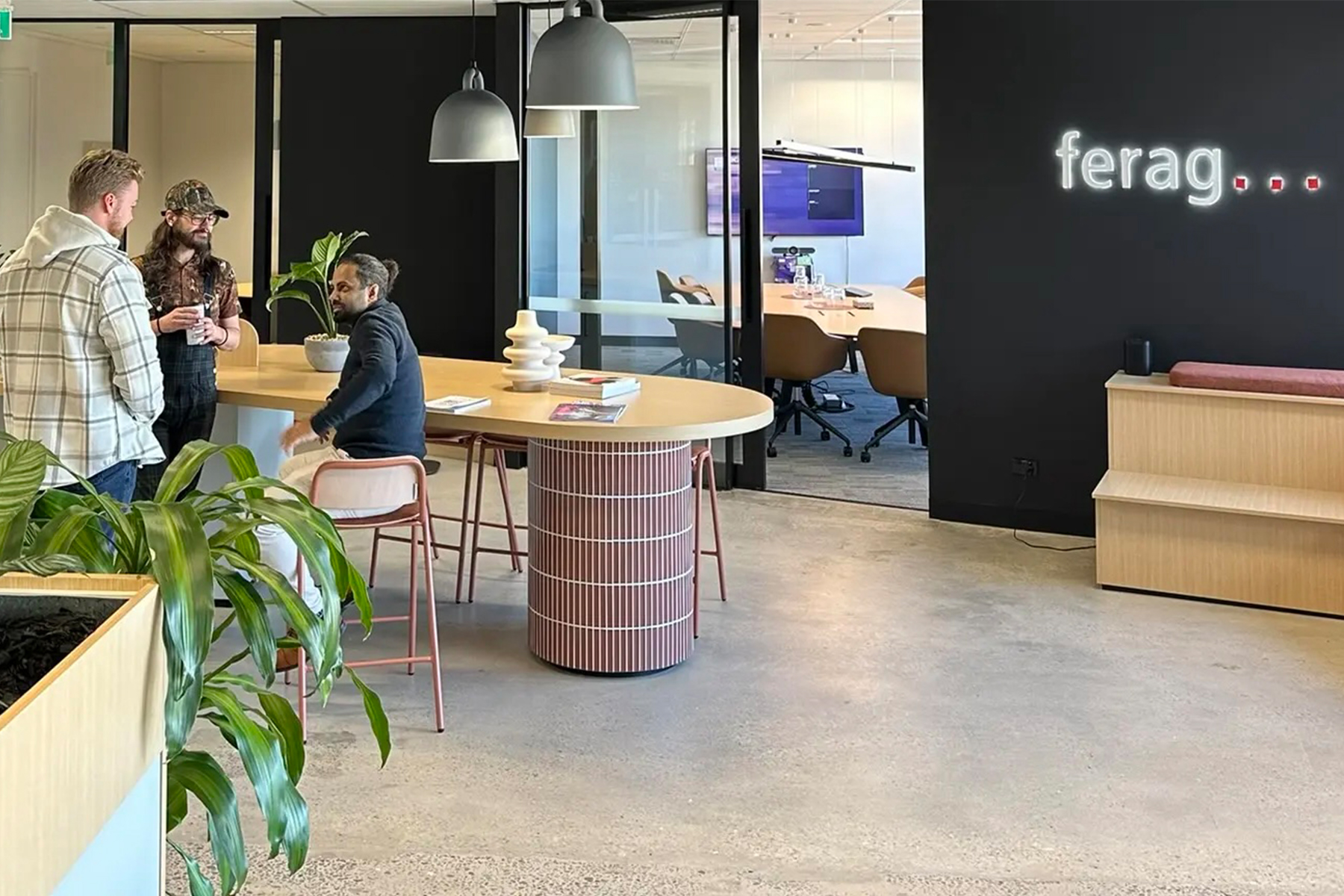
In a significant milestone of its evolution, Ferag Australia rebrands itself to Ferag APAC, a change aimed at aligning with its expanded presence throughout the Asia-Pacific region.
This change follows a period of extraordinary growth over the past nine months, during which the company expanded from 12 employees in Australia in September 2023 to over 60 employees throughout APAC as of today.
Regional expansion and new offices
Ferag APAC now operates offices in Australia, Malaysia, and India, underscoring its commitment to serving a wider market and enhancing its service capabilities across the region. This strategic expansion supports Ferag APAC’s vision of becoming a leading provider of innovative solutions within the intralogistics sector.
Customer growth and strategic acquisitions
The company’s impressive growth is also evident in its customer base. Following the acquisition of dereOida in September of last year, Ferag APAC has onboarded three iconic brands to its flagship software, ferag.doWarehouse. This strategic acquisition has strengthened Ferag APAC’s market presence and customer portfolio.
Significant increase in female participation
In alignment with its commitment to diversity and inclusion, Ferag APAC has seen a notable increase in female participation within its workforce. Since January, 12 female staff members have joined the team, raising the overall female participation rate from 8 per cent to 22 per cent. Even more remarkable is the rise in female representation in management, which has surged from 0 per cent to 20 per cent. This progress reflects Ferag APAC’s dedication to fostering an inclusive workplace and empowering women in the technology and intralogistics sectors.
Global hub for software development
With its expanded presence, Ferag APAC has become the global hub for the development of its innovative ferag.doWarehouse software. This strategic positioning enhances Ferag APAC’s capability to drive technological advancements and deliver superior software solutions to its global clientele.
Industry context
The broader Australian workplace sees a gender split of 53.4 per cent men and 46.6 per cent women. In contrast, the intralogistics market in Australia has a lower female participation rate, with men making up approximately 75 per cent and women 25 per cent. The Australian software industry reflects a similar gender distribution, with 75 per cent men and 25 per cent women (Australian Bureau of Statistics) (WGEA).
Warehouse Management Systems – How not to get burnt
Article | 20th May, 2024
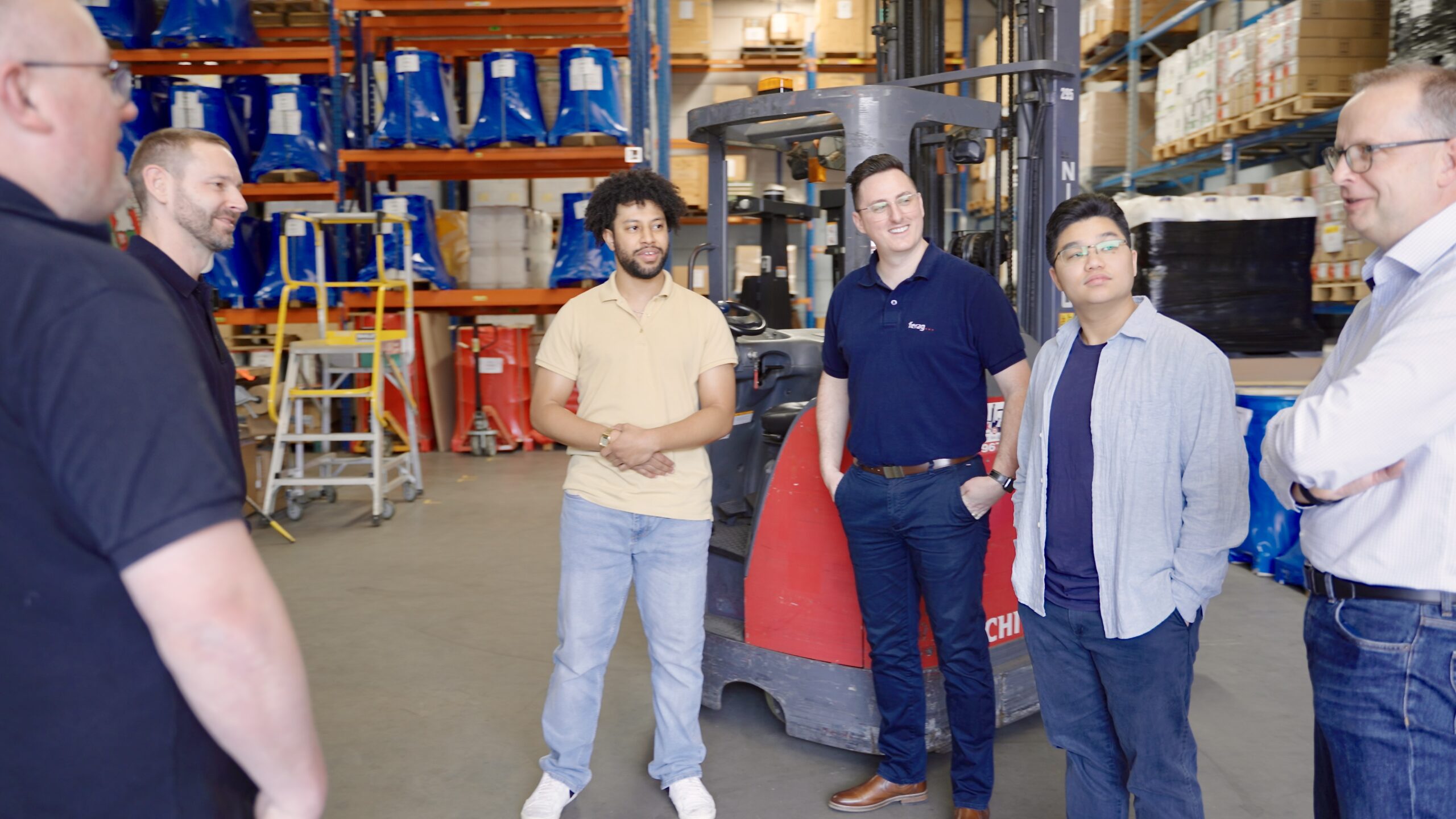
With the complexity of the market growing due to an influx of solutions and players, businesses embarking on the journey of implementing a warehouse management system (WMS) face exciting yet daunting challenges. According to Ricardo, Sales Director at Ferag, the key to a successful implementation starts with self-knowledge.
“It’s really important for companies to understand their own operations thoroughly. Especially when operations managers are new or unfamiliar with the intricate details of their systems and processes,” Ricardo explains. He emphasises the importance of engaging with every section of the warehouse to grasp what employees experience daily.
Ricardo advocates for a partnership approach rather than a directive one, stressing the importance of choosing a WMS provider who listens and collaborates. “We believe in designing solutions with our clients, not for them. This collaborative approach ensures that the solutions are tailored to the specific needs of the business,” Ricardo says. This strategy not only aligns the system with the company’s existing processes but also enhances the overall functionality and integration of the WMS.
Addressing the automation dilemma, Ricardo suggests a cautious approach. “The best option often is not to jump straight into automation but to first understand and streamline your current processes,” he advises. This initial step allows for a more informed decision on whether automation is necessary or if manual processes simply need refining. Ricardo highlights the importance of identifying the most resource-intensive aspects of operations, such as labour and space, which are typically the most costly and impactful areas to address.
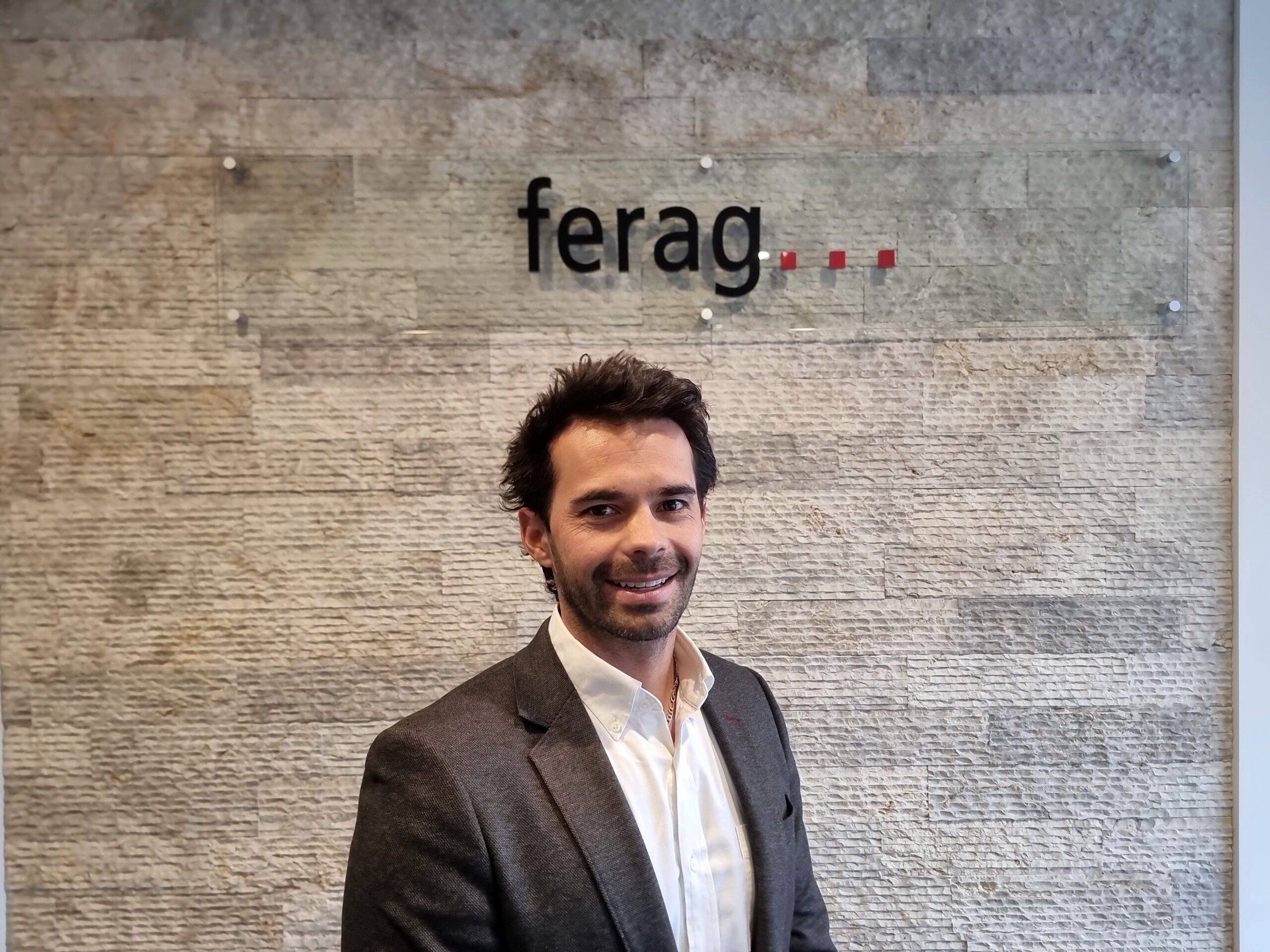
Furthermore, Ricardo points out the significance of data accuracy in the configuration of a WMS. “Data is the most critical part of warehouse design. If the data is incorrect, the whole solution will be flawed, regardless of how advanced the system is,” he says. He encourages businesses to ensure their WMS provider is not only taking in data but also thoroughly analysing it to understand the full scope of operations from receiving to shipping.
Ferag employs data scientists to enrich and verify data, ensuring that solutions are based on accurate and comprehensive information. “We don’t just accept the data we’re given; we delve into it, challenge assumptions, and enhance it to develop the most effective solutions,” Ricardo shares. This meticulous attention to data serves as a foundation for any WMS implementation, aiming to optimise efficiency and accuracy across all warehouse operations.
When it comes to implementation methodologies, Ricardo underlines the importance of a proven, flexible approach. “We adhere to industry-standard methodologies that allow for agility and quick adaptation, which is crucial for integrating new automation technologies as business needs evolve,” he explains. This flexibility is vital for maintaining cost-effectiveness and ensuring that the WMS can adapt to future changes within the company.
Ricardo also addresses the broader goals businesses typically aim to achieve through a WMS. “The primary aims are to enhance labour efficiency, maximise space utilisation, and improve overall operational throughput,” he states. By focusing on these areas, companies can not only improve their immediate operations but also lay a solid foundation for future growth and efficiency.
In terms of dealing with potential issues during the WMS implementation, Ricardo suggests that businesses should look for a partner who is prepared to adapt the solution to their needs rather than forcing the company to conform to the software. “It’s about finding a partner who is willing to mould their solutions around your processes, ensuring the WMS complements your operations rather than complicating them,” he remarks.
Lastly, Ricardo touches on the critical nature of choosing whether to automate certain operations or to refine manual processes. “Investing in the right areas at the right time is crucial. You may discover that enhancing your current operations is more beneficial than full automation,” he advises. This strategic approach allows businesses to optimise their investments, ensuring that any technological advancements, like WMS, genuinely benefit the operational dynamics and contribute to long-term success.
As businesses continue to navigate the complex landscape of warehouse management systems, the insights provided by Ricardo underscore the importance of a thoughtful, data-driven approach in selecting a WMS provider. By focusing on collaboration, data integrity, and strategic investment in technology, companies can enhance their operational efficiency and pave the way for sustained growth
Read the MHD article here
Why are some of Australia’s largest iconic brands jumping on board with the new kid on the block?
Article | 3rd May, 2024
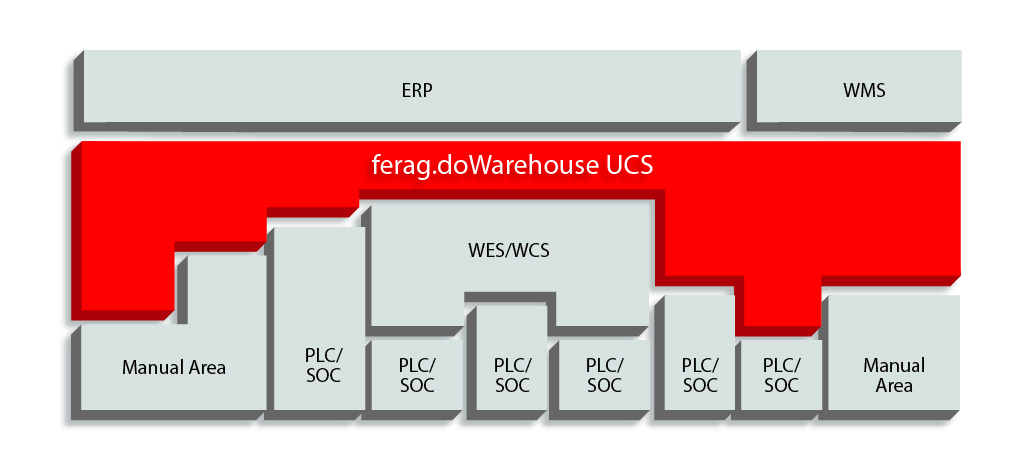
In the last few months, some of Australia’s largest and most prestigious brands have implemented ferag.doWarehouse (previously from dereOida). This roll-out includes major department stores, online retailers, third-party logistics providers (3PLs), amongst others. Most of these industry leaders are either in the process of going live, or already live with doWarehouse!
So, what sets this upstart Warehouse Management System (WMS) apart? Like every other WMS, it increases warehouse operations’ efficiency, boosts productivity, reduces order times, enhances stock accuracy, and supports cycle counting.
However, doWarehouse’s innovative approach distinguishes it from competitors. It is much more than just a WMS. It is a Unified Control System (UCS), which means it is a WMS, Warehouse Control System (WCS), Warehouse Execution System (WES) and/ or anything in between. Interfacing from your Enterprise Resource Planning (ERP) software all the way down to Program Logic Controller (PLC) level. It is fully and truly agnostic, offering best-in-class abstraction and optimisation, allowing for highly flexible and easy integration with equipment. In layman’s terms, doWarehouse not only manages your entire warehouse—it can also seamlessly integrate with your robots, warehouse hardware, and machinery, resulting in significant time and cost savings. You are no longer locked into outdated or unsuitable hardware, and you can select equipment that best suits your processes with the confidence that doWarehouse will manage them effortlessly.
Unlike other WMS providers, doWarehouse doesn’t require you to change your processes to fit the software. Most systems force you to mould your well-honed processes to their configuration—not so with doWarehouse! It also provides the flexibility to adapt new processes and functionalities as business needs evolve, such as shifting from retail to an online platform or integrating automated processes.
Its seamless integration and analytics enable quick and effortless setup and provides ongoing control and visibility of not only the different warehouse tasks, but also of their costs via meaningful reports and dashboards.
doWarehouse has been developed from the ground up utilising a state-of-the-art technology stack. This provides independence from the server operating system, it also offers scalability and excellent utilisation of server resources. In addition, dowarehouse’s modern architecture facilitates significantly quicker and cheaper modification and customisation.
In summary, doWarehouse UCS enables you to choose the equipment that best meets your warehouse requirements as well as stay up to date with the latest technology, without having to compromise on functionality.
doWarehouse was previously a part of dereOida. In September 2023, Ferag acquired dereOida, bringing doWarehouse and the Australian dereOida team into its fold.
Read the MHD article here:
Geek+ and Ferag announce partnership
Article | 11th Mar, 2024
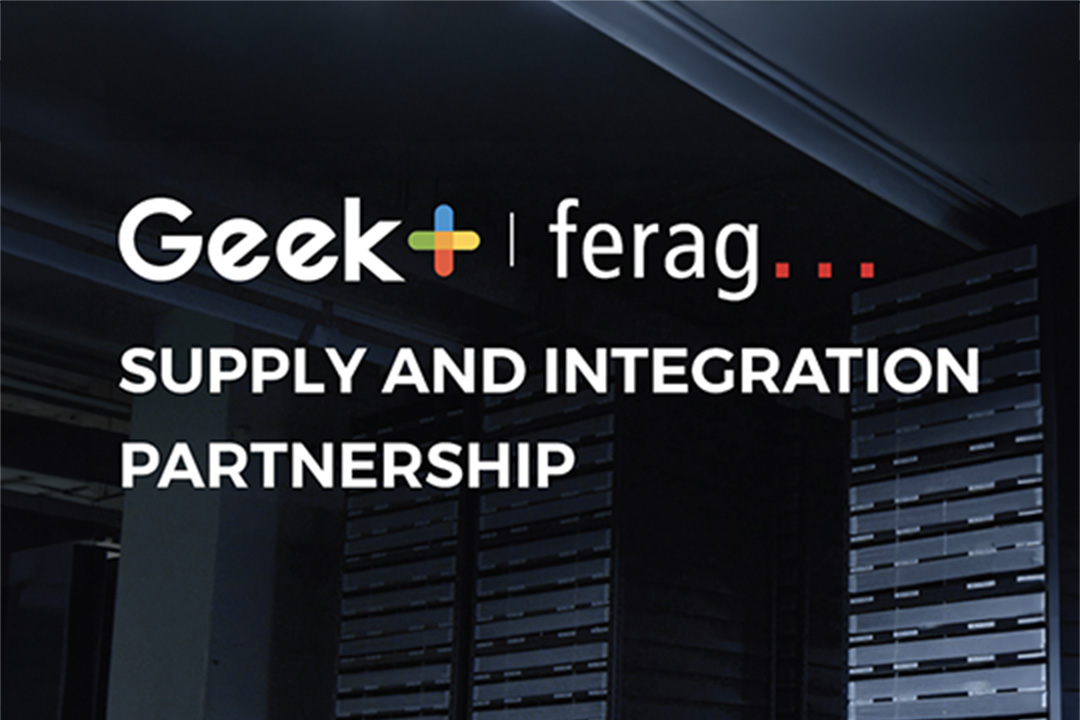
Geekplus, the mobile robot and smart logistics solutions company with Ferag APAC have announced a partnership, which will empower Ferag APAC to supply, install, and service Geekplus equipment.
Ferag notes this partnership will help it establish itself as a comprehensive solution provider for the Asia-Pacific region.
“I am delighted to partner with Geekplus for the sales and implementation of their robotics,” says Managing Director for the Asia Pacific at Ferag, Karl Friesenbichler.
“Many of our clients, including Myer – who has notably installed three Geekplus models, the Tote-to-Person, Shelf-to-Person and sorting solutions – are already reaping the benefits of Geekplus robots.”
Known for its pioneering solutions in order fulfilment, Geekplus caters to more than a 1000 international clients. Founded in 2015, the company has broadened its operations globally – now employing a workforce exceeding 1500.
It holds a strong market presence in the United States, Germany, the United Kingdom, Japan, South Korea, Mainland China, the Hong Kong SAR, and Singapore.
Ferag as the ultimate one-stop shop, consistently meets its clients’ exacting requirements with solutions that are both timely and within budget.
“Our strategic partnership with Ferag has been instrumental in supporting our market growth in the Asia-Pacific region,” says Head of International Business at Geekplus, Lit Fung.
“By leveraging their experience and adhering to the highest quality and service standards in system integration, we are ensuring efficient operations in our clients’ distribution centres. Looking ahead, we are excited about the prospects of more projects going live as a result of our collaboration with Ferag.”
This strategic alliance unites Geekplus’s cutting-edge suite of Goods-to-Person mobile robotic solutions with Ferag’s systems integration expertise and advanced warehouse software to offer clients across the Asia-Pacific region a fully integrated warehouse system tailored to their stringent specifications.
Ferag AG joins forces with dereOida
Article | 1st Sep, 2023
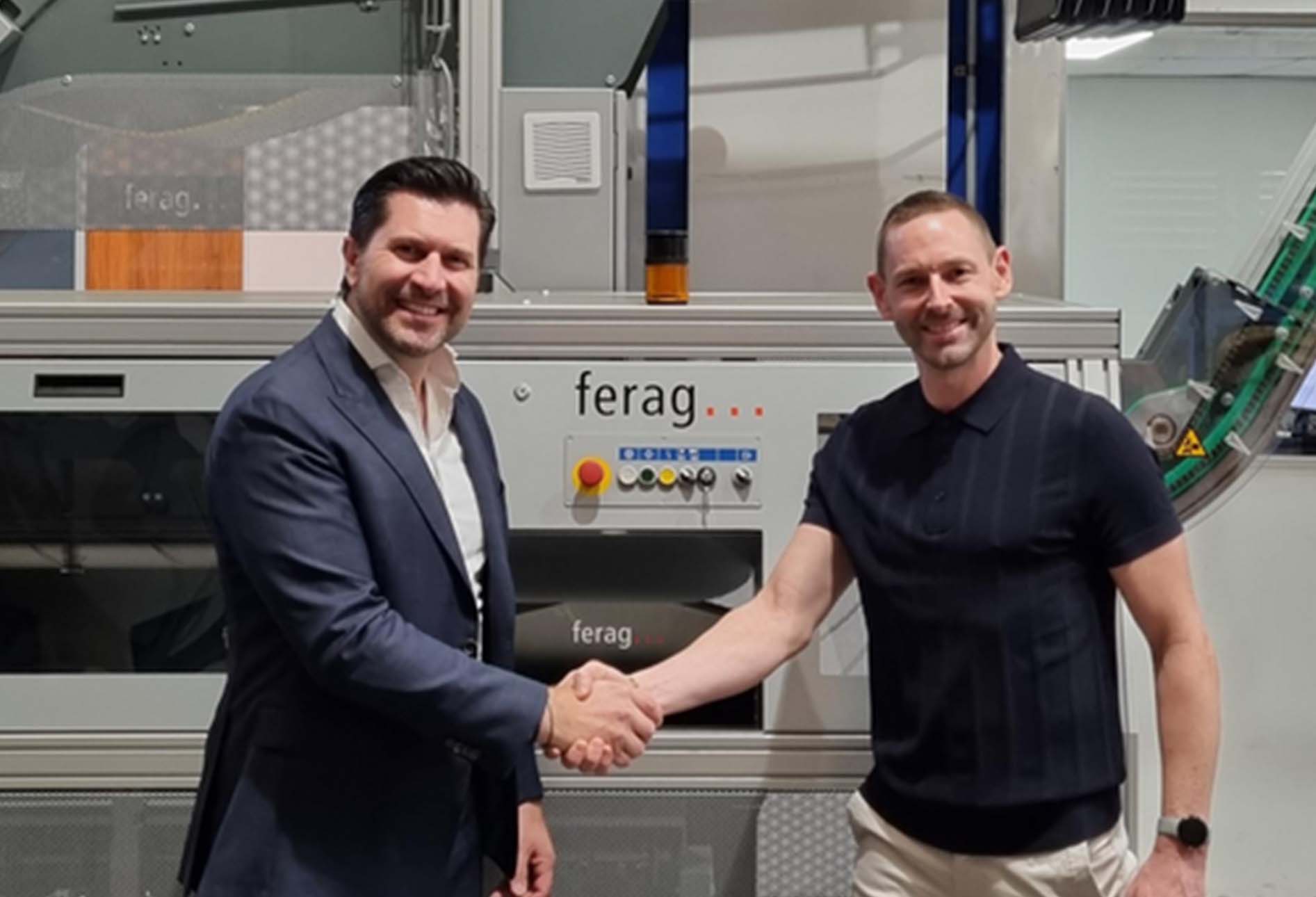
Ferag AG and dereOida have announced their merger, combining their expertise and innovations to create a comprehensive, single solution for all intralogistics requirements.
Ferag AG, a renowned family-owned Swiss company with more than 65 years of experience as a global market leader in material flow systems, and dereOida, an Australian pioneer in warehouse automation software with its revolutionary doWarehouse system, are uniting their strengths to offer an unparalleled intralogistics solution to businesses across various industries.
“We are thrilled to announce the merger with dereOida, a strategic move that marks an exciting chapter in the growth of our two companies,” says Tommaso Ramundo, CEO Ferag AG.
“This partnership brings together two industry innovators with a shared commitment to excellence and quality. By combining the strengths of Ferag and dereOida, we are able to offer an even more comprehensive range of solutions to our valued customers.”
dereOida’s flagship product, doWarehouse, presents a holistic single view across the warehouse. With the freedom to select any automated system, customers can seamlessly integrate their chosen hardware into doWarehouse, all while benefitting from dereOida’s outstanding support services.
The merger of these two industry innovators presents a transformative offering for businesses seeking to optimise their warehouse operations. By combining dereOida’s state-of-the-art software solutions with Ferag’s unparalleled expertise in material flow systems and design, customers can expect an end-to-end solution that addresses every aspect of intralogistics with unprecedented quality, reliability, and support.
“The synergy between our teams and the complementarity of our offerings create a powerful force this will undoubtedly shape the future of our industry,” says Karl Friesenbichler, CEO dereOida.
“The combined expertise and resources of Ferag and dereOida will allow us to explore new horizons and drive innovation in every aspect. We are confident that this merger will lead to remarkable results and increase the value we provide to our customers, partners and stakeholders.”
Key benefits of the acquisition:
Comprehensive Intralogistics Solutions: Customers now have access to a complete suite of intralogistics solutions that cover the entire spectrum of warehouse automation and management.
Synergy of Expertise: The merger brings together Ferag’s decades of experience in equipment intralogistics with dereOida’s cutting-edge automation software, resulting in a holistic and advanced hardware and software intralogistics solution.
Optimised Productivity: Businesses can leverage the power of doWarehouse’s real-time insights and analytics to drive continuous improvements and optimise their operations.
Simplified Support: dereOida’s single point of contact for hardware and software support ensures seamless assistance and quick issue resolution for enhanced customer satisfaction.
Read the full article here
